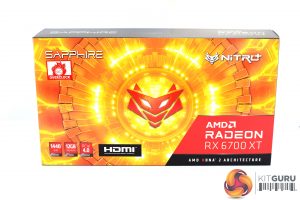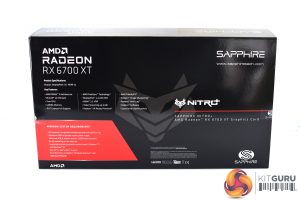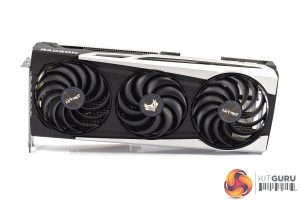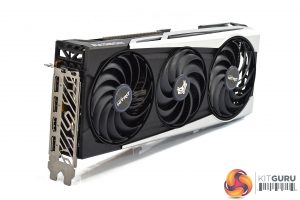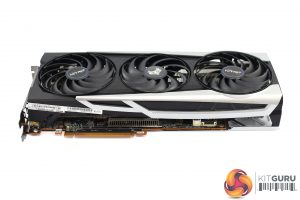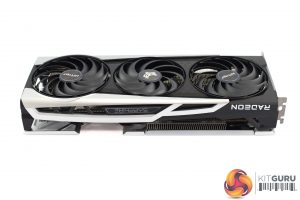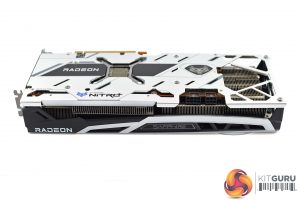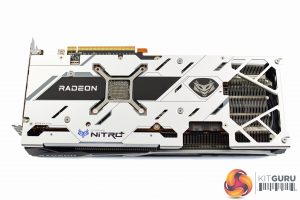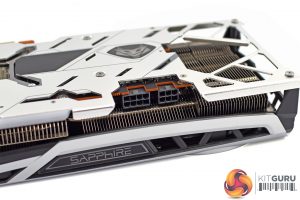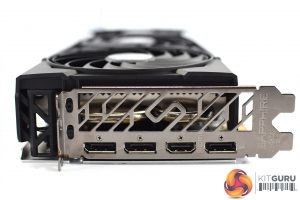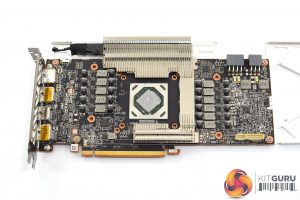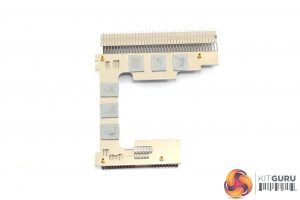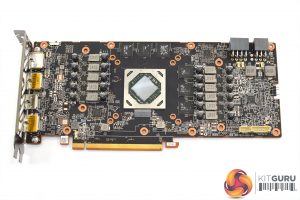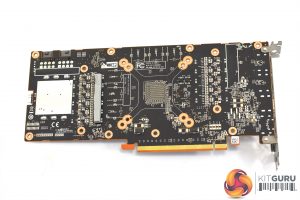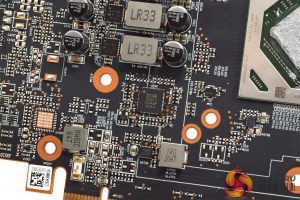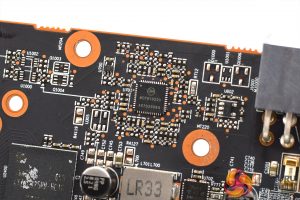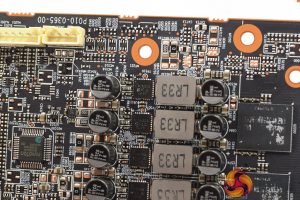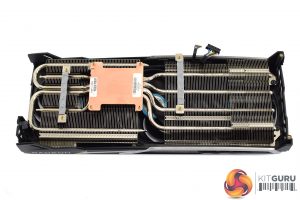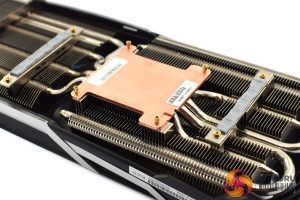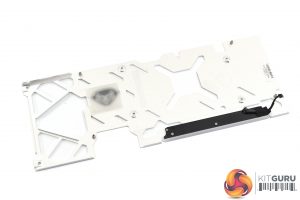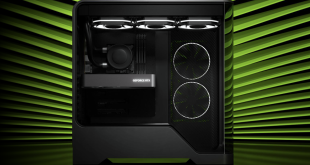The Sapphire RX 6700 XT Nitro+ ships in a very eye-catching box, with mostly yellow and orange used on the front. There's no photo of the card itself, just the branding and the Nitro logo in the middle. On the back, Sapphire highlights some key specs and features of the GPU.
There's not much in the way of included accessories, with just a warranty card and quick start guide in the box.
As for the card itself, it is using the same shroud design that we saw with the RX 6800 XT Nitro+. So that means it is mostly black plastic, but with a few silver areas which adds some contrast. I personally think it's a great-looking card, although the silver sections may not appeal to everyone if you have a stealthy black-out build.
The cooler is using three fans, with the central fan measuring 90mm while the outer two measure 100mm. All three feature a ring around the outer edge of the fan, and Sapphire calls the new design a ‘Hybrid Fan’, as they say it is meant to offer the increased pressure of a blower fan combined with the traditional low noise levels of an axial fan. We can also see the central fan spins in reverse, relative to the outer two, similar to what we’ve seen from the likes of Gigabyte and ASUS over the past year or two.
It's certainly a large card too, measuring 310.05 x 130.75 x 51.4mm. Anyone with a smaller ATX case will want to double check that this will fit.
The Nitro+ also features a BIOS switch towards the I/O bracket. The switch furthest from the I/O bracket engages the Performance BIOS, while the central position engages the Silent BIOS. There is a third position, but this is not a third BIOS – rather it lets you use Sapphire's TriXX software to change which BIOS is used without physically moving the switch.
As for the backplate, it's a silver metal plate with some black sections. There's a large cut-out at the end of the card though, to allow direct airflow through the heatsink, with another cut-out behind the GPU core.
Power requirements and display outputs are the same as reference – meaning the card needs 1x 8-pin and 1x 6-pin power connectors, and it offers 3x DisplayPort 1.4 and 1x HDMI 2.1 video outputs.
Taking the card apart, we can see a dedicated heatsink used for cooling the memory. This is a little smaller than the heatsink used with the RX 6800 XT Nitro+, and it is only a finned heatsink – there's no heatpipe as found with the RX 6800 XT model.
Removing the heatsink gives us a good look at the PCB, with Sapphire's design appearing very close to the reference board. It uses 11 power phases, split with 9 for the GPU and 2 for the memory. The GPU VRM is controlled by International Rectifier's IR35217, while the memory controller used is OnSemi's NCP81022N. Vishay SIC632A and SIC649A MOSFETs are used throughout.
We can also see the heatsink design is different compared to the RX 6800 XT Nitro+. Instead of 6x 6mm heatpipes, the RX 6700 XT uses four long heatpipes across two fin stacks. There's two separate plates to contact with the MOSFETs via thermal pads, while the GPU die contacts with a central copper baseplate.
There is a single thermal pad used to contact the PCB to the backplate (it's not visible in the above image as it stuck to the back of the PCB.)
 KitGuru KitGuru.net – Tech News | Hardware News | Hardware Reviews | IOS | Mobile | Gaming | Graphics Cards
KitGuru KitGuru.net – Tech News | Hardware News | Hardware Reviews | IOS | Mobile | Gaming | Graphics Cards


